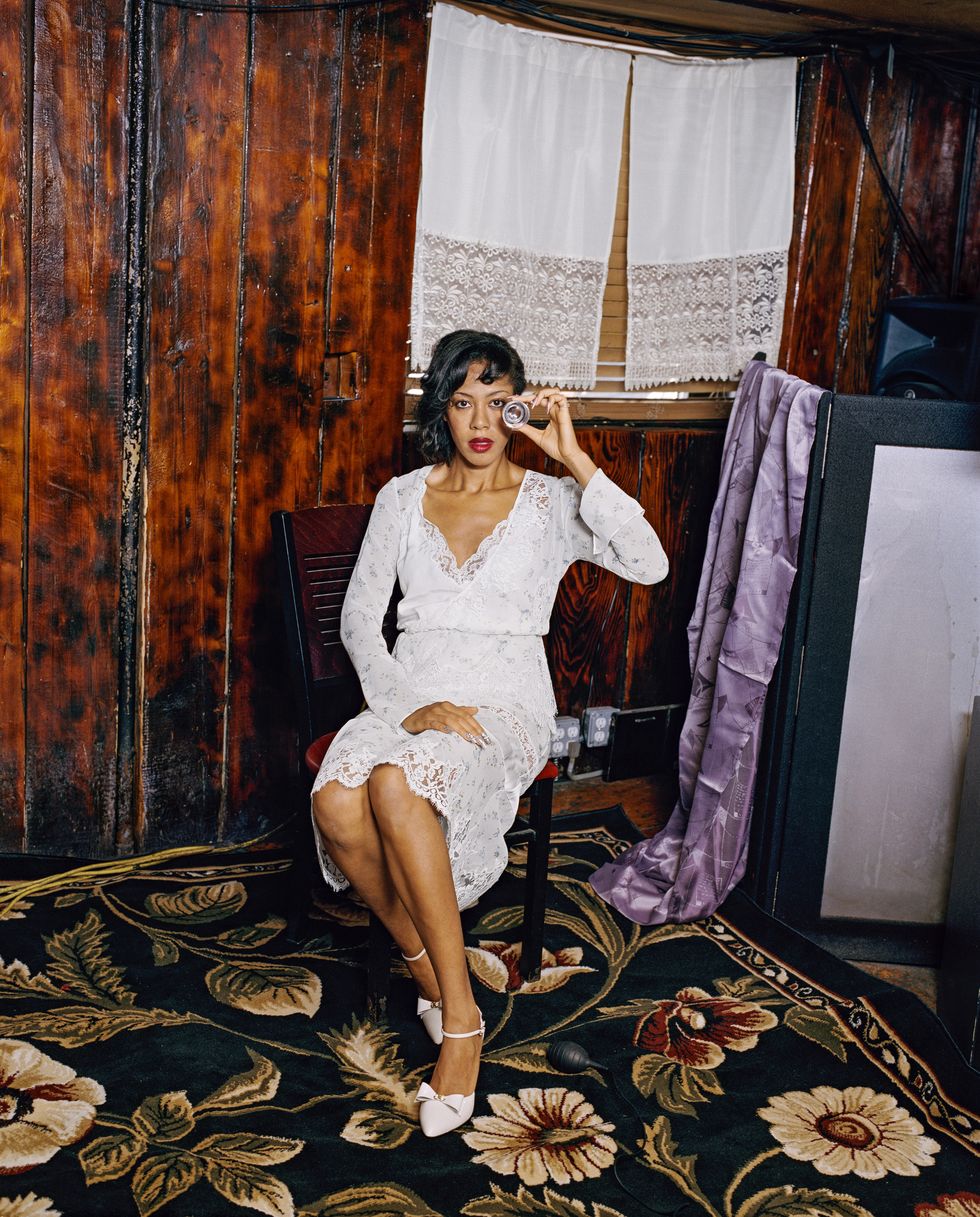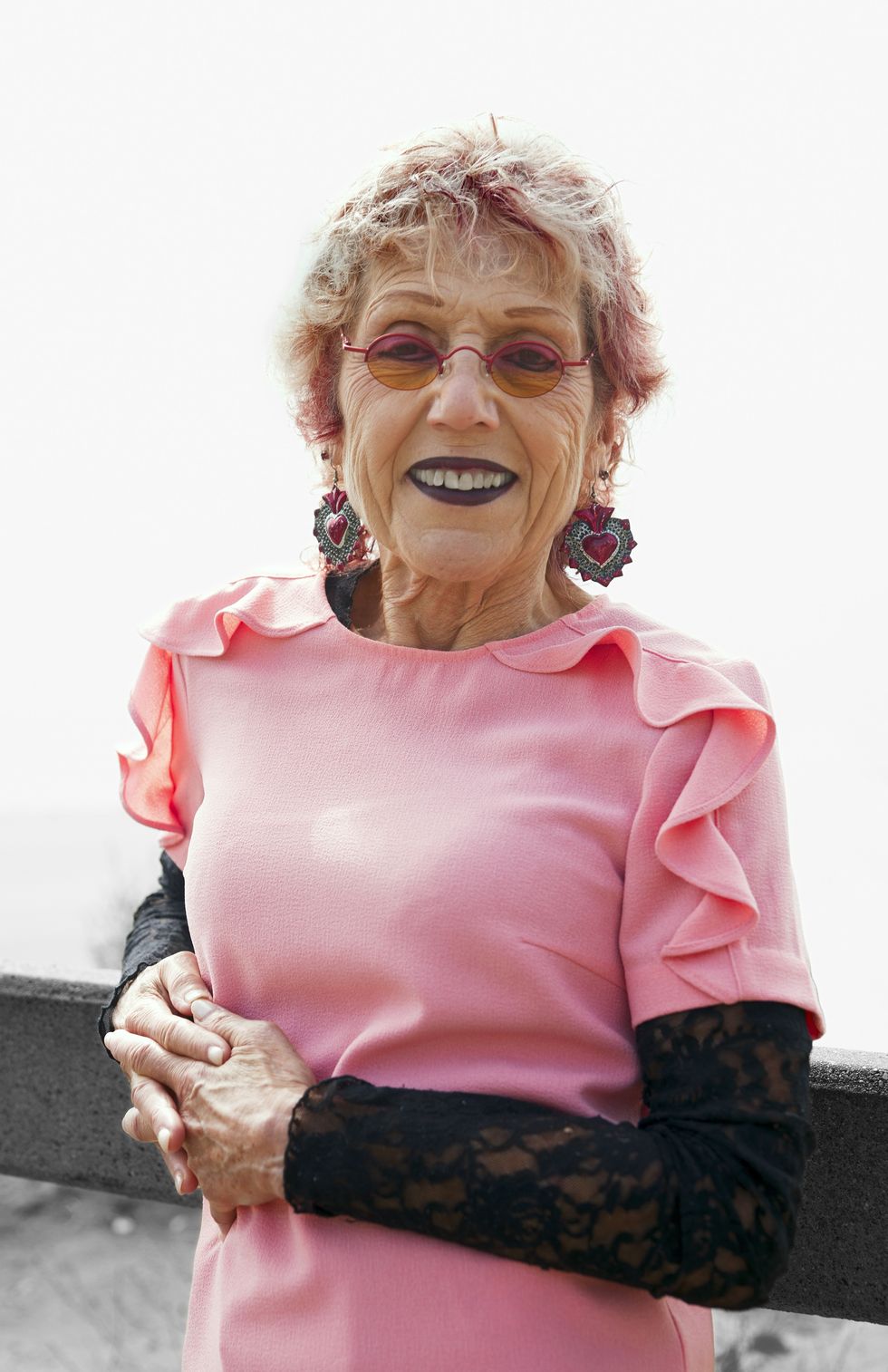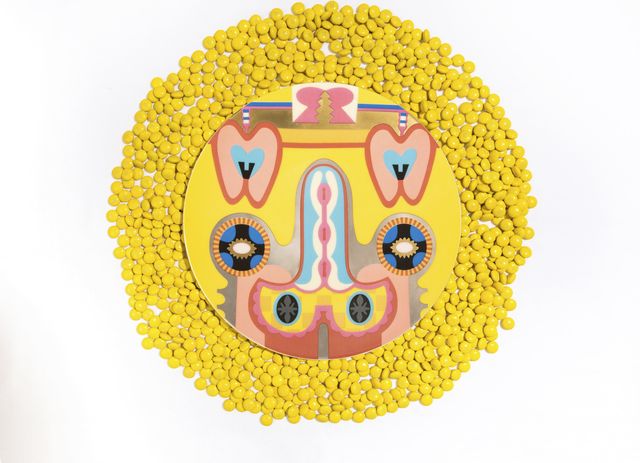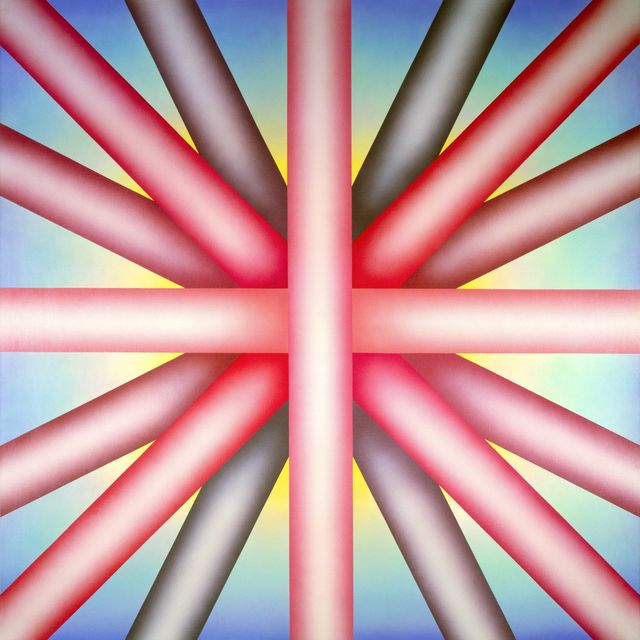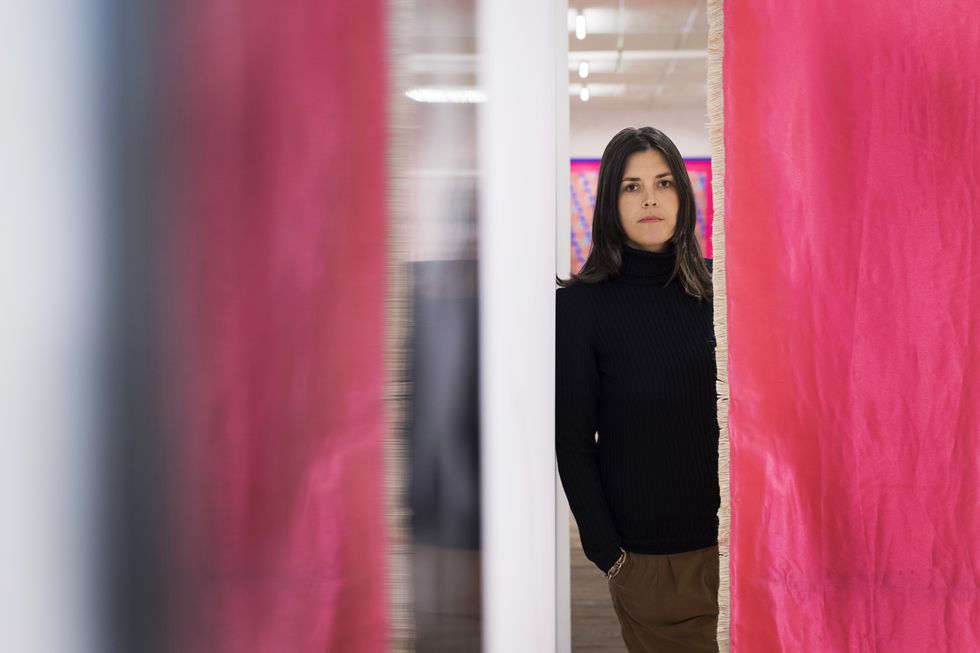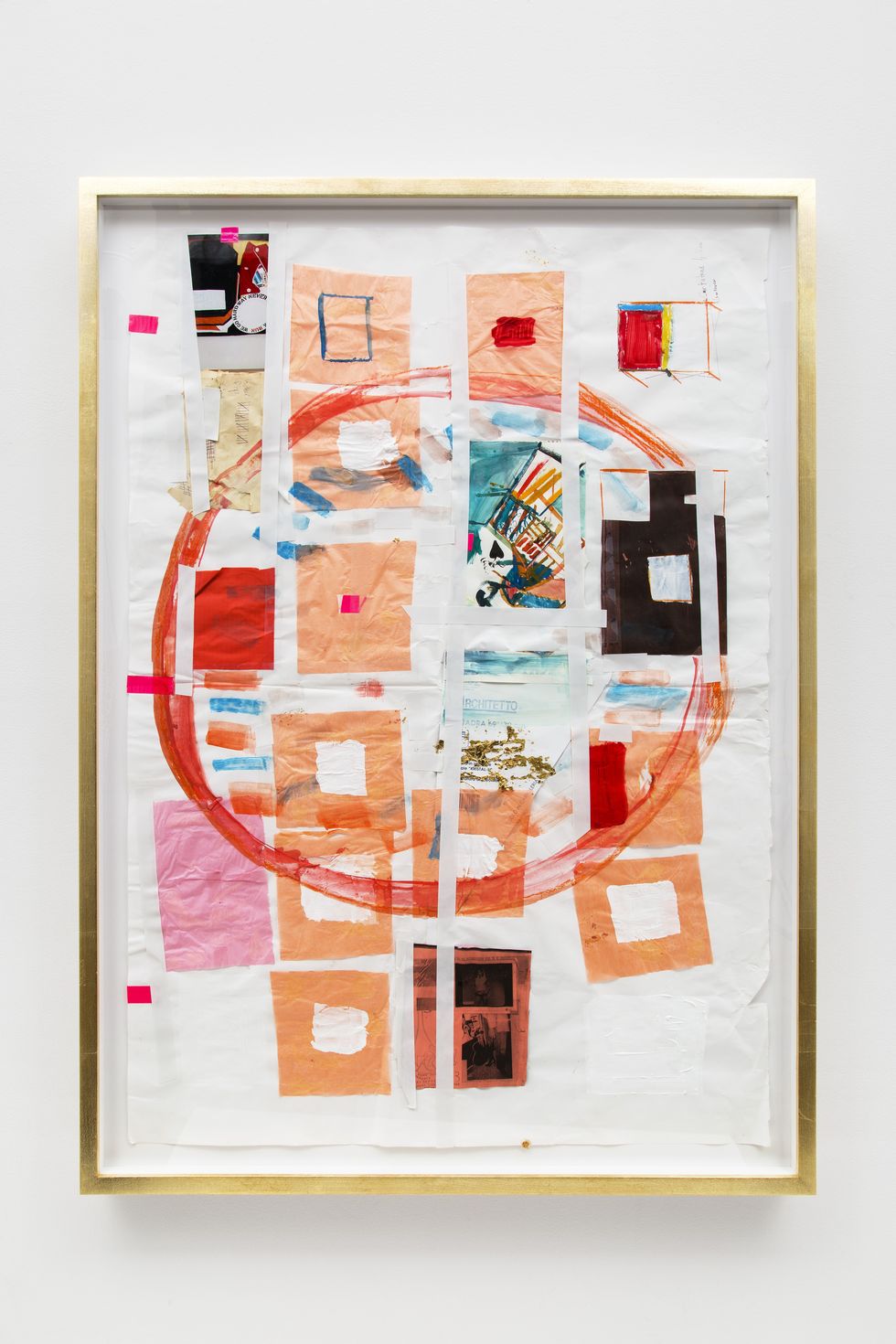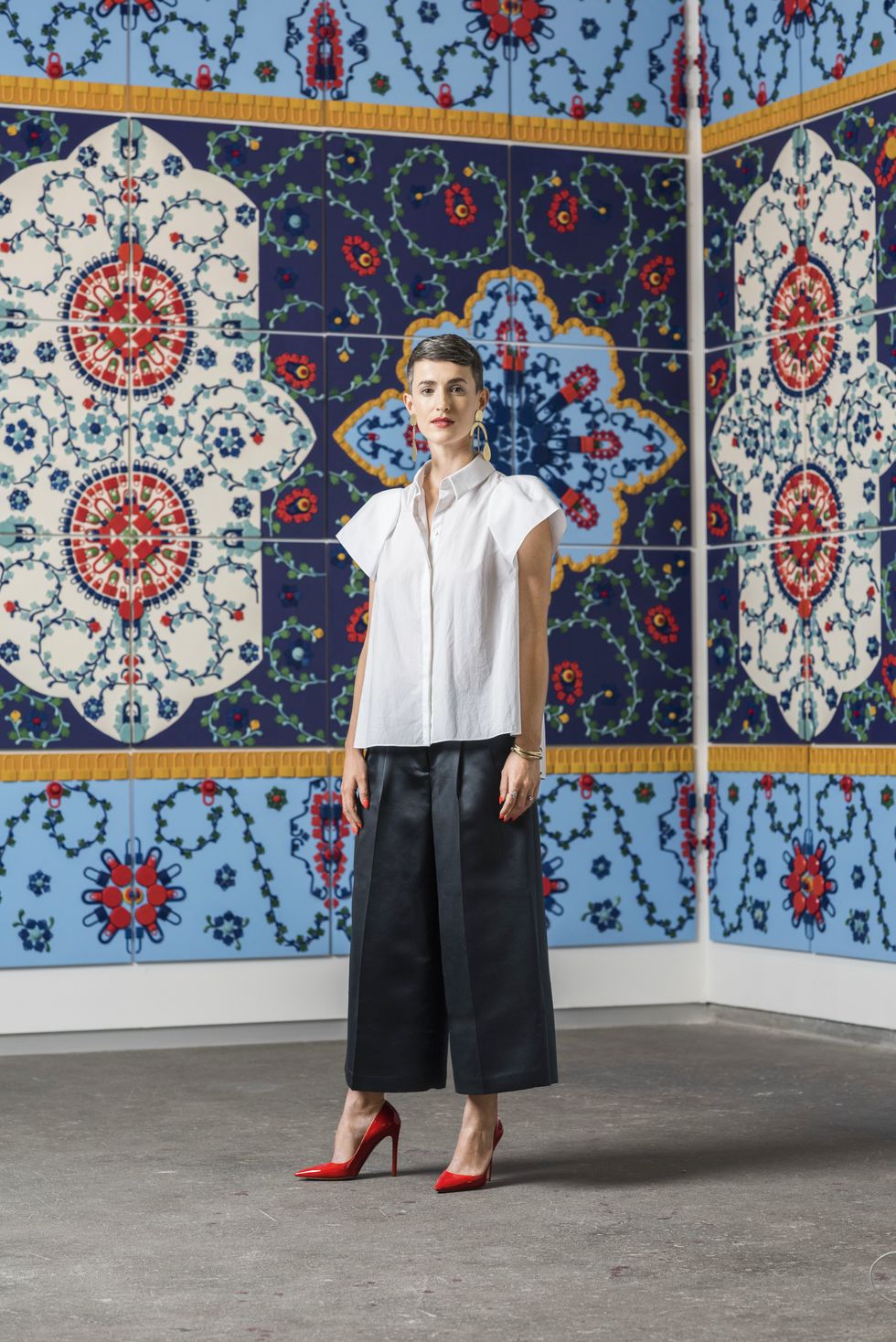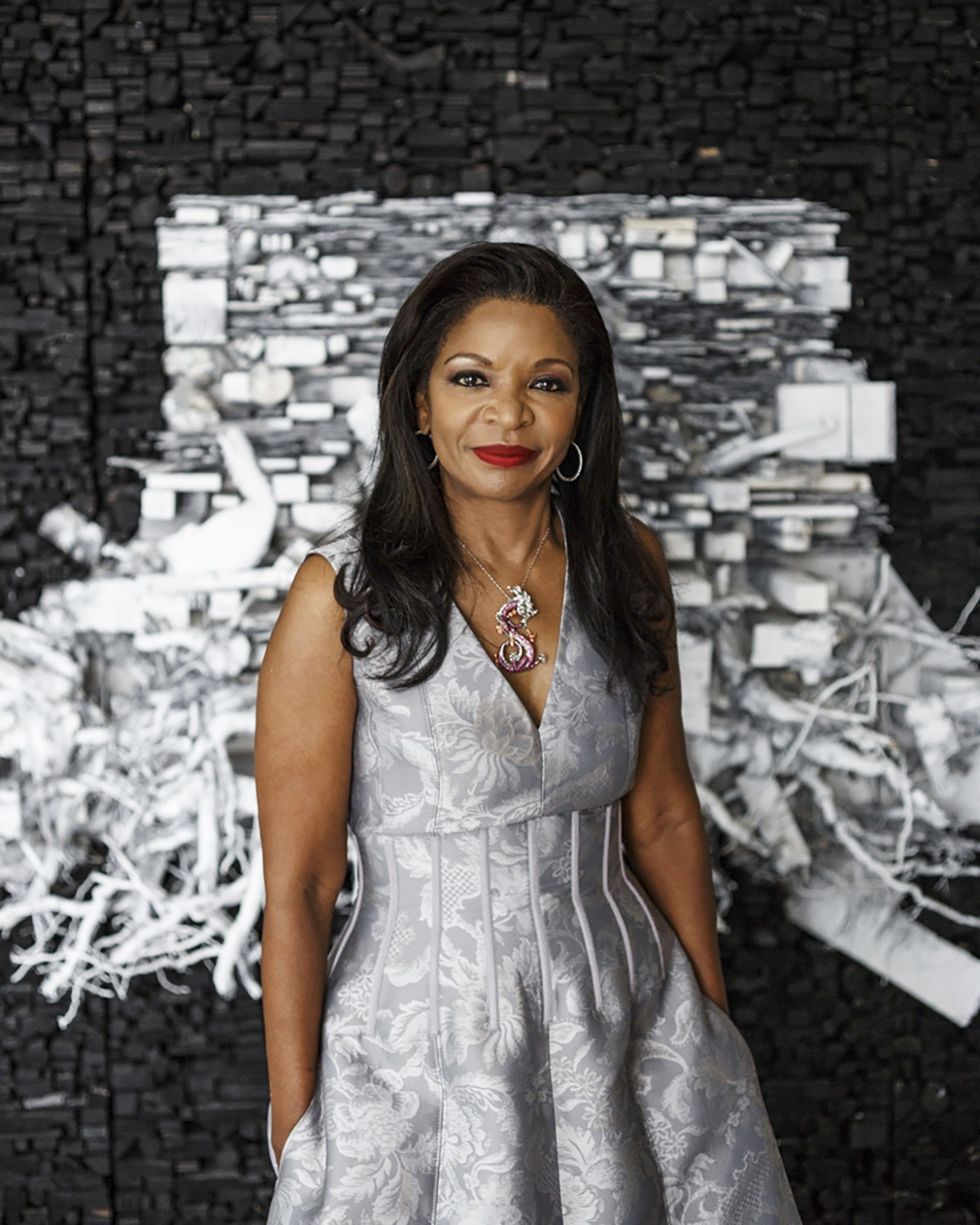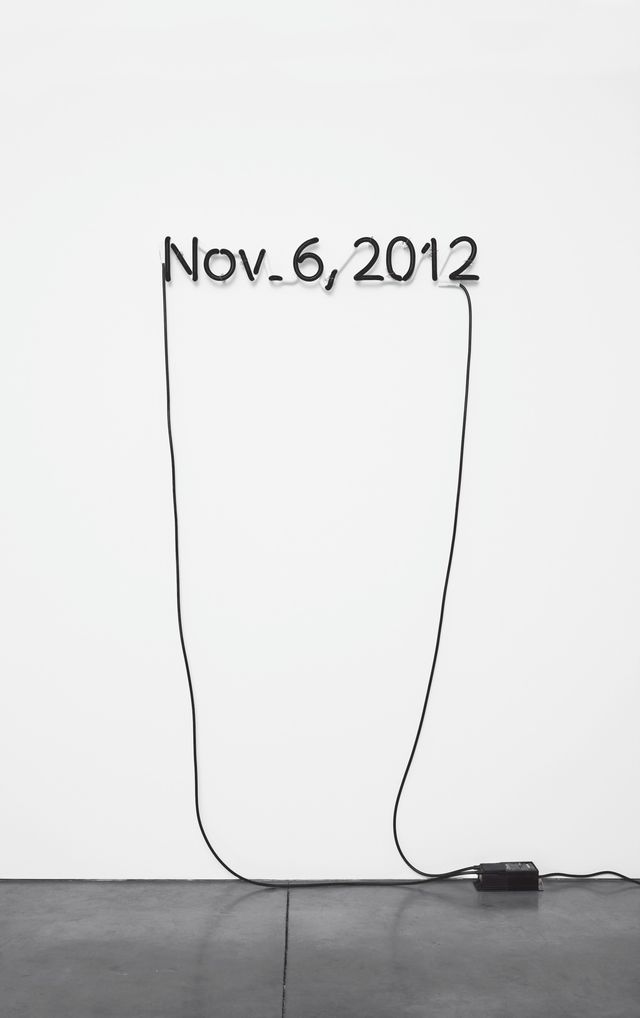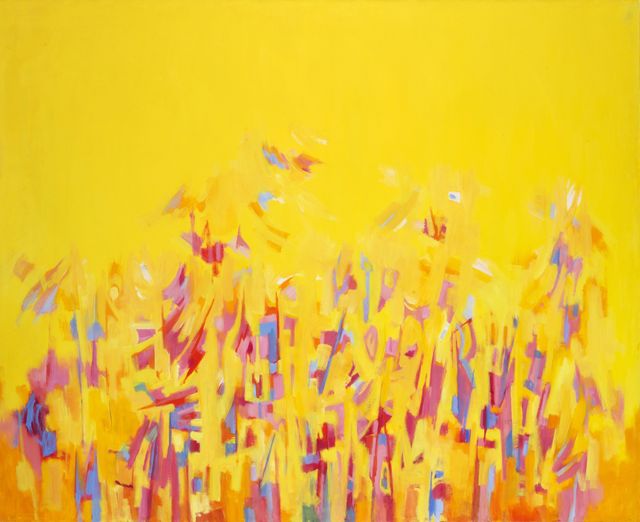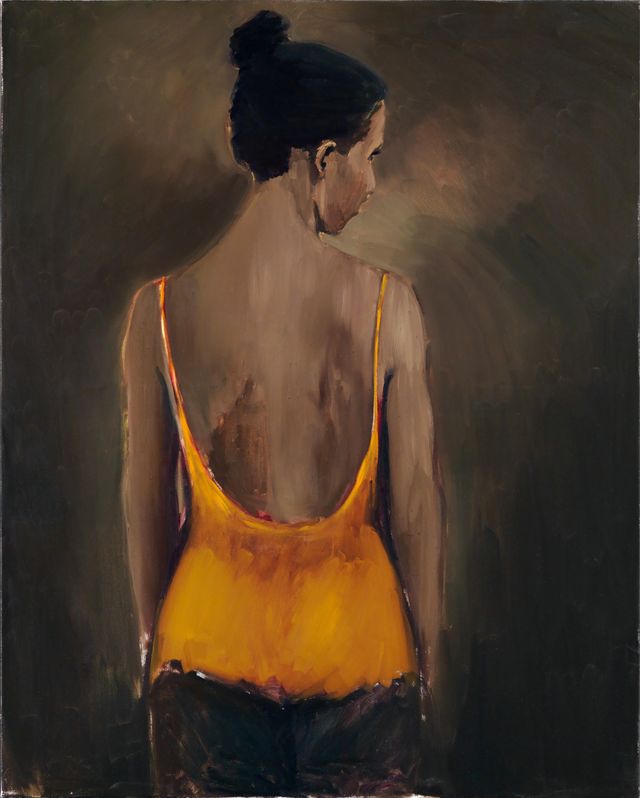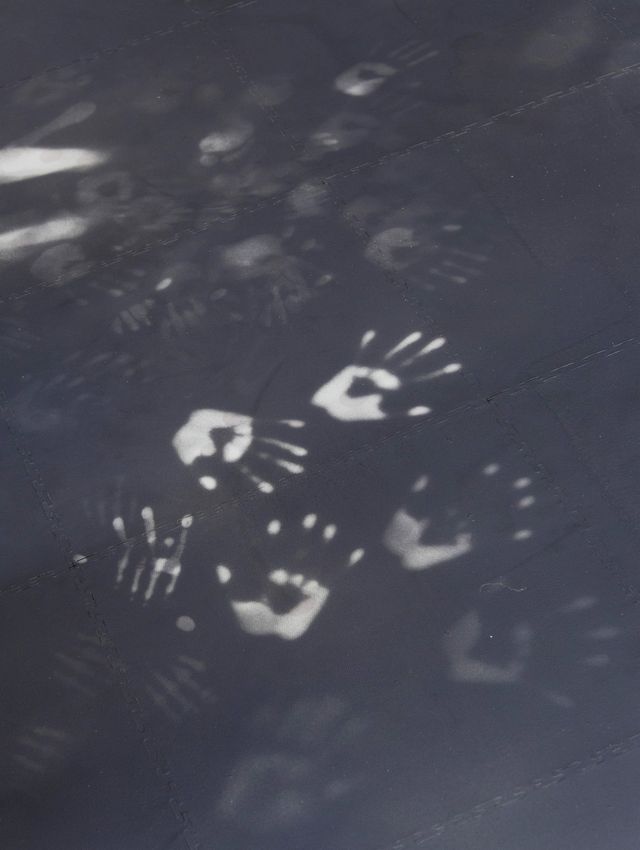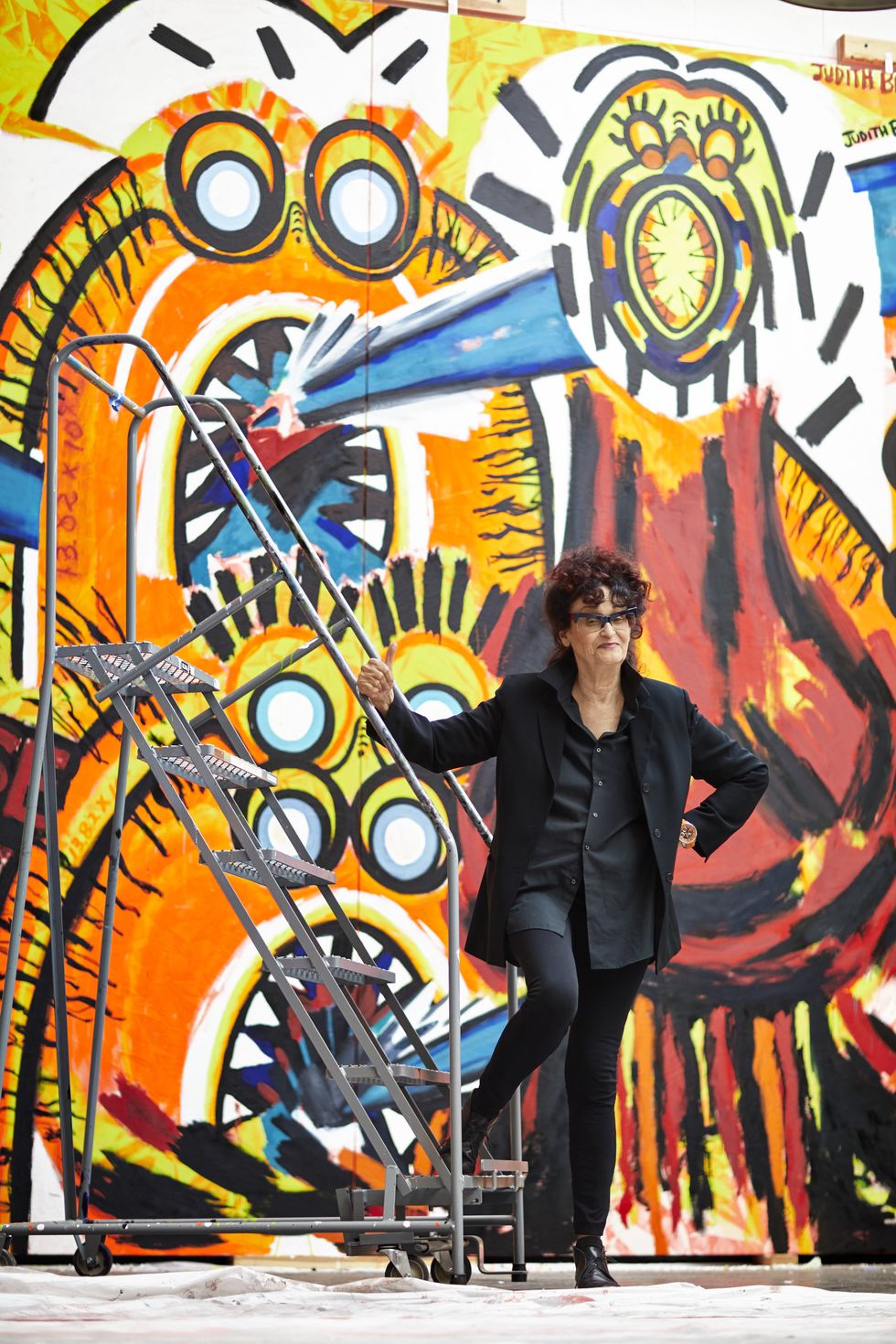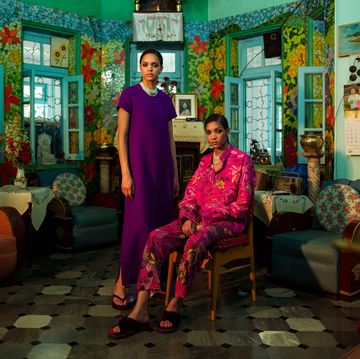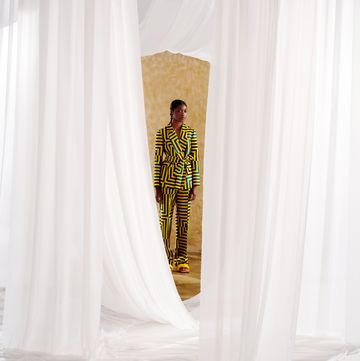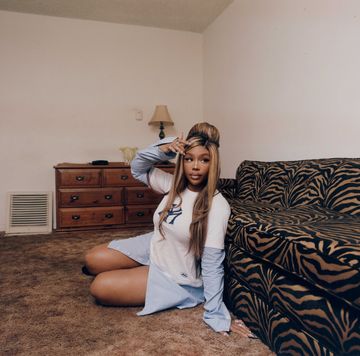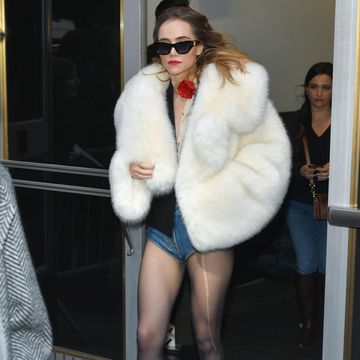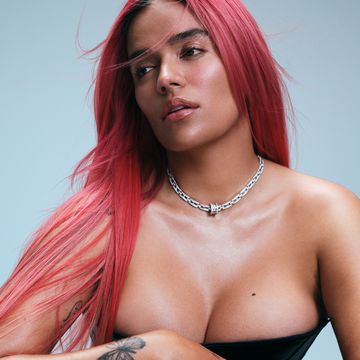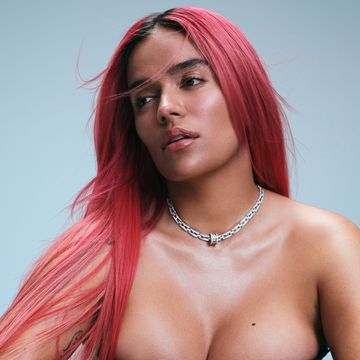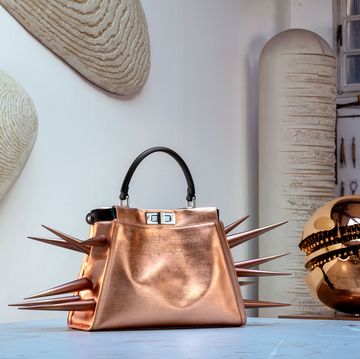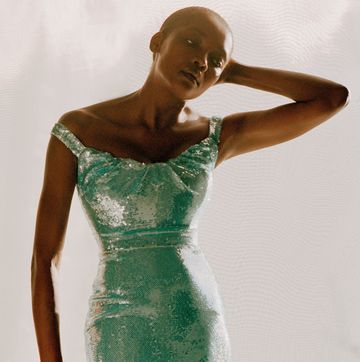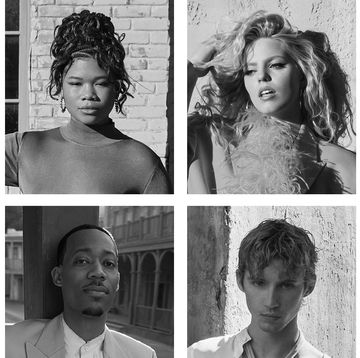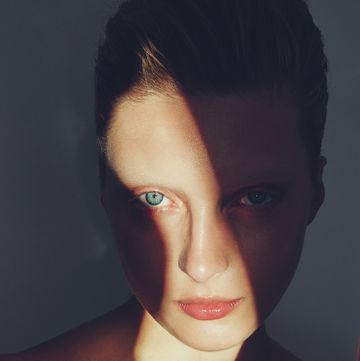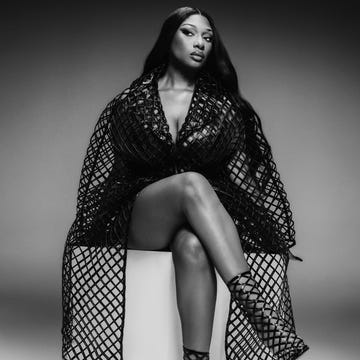The Photographer: Deana Lawson
Deana Lawson’s meticulously staged photographs often feature people she has only just met—sometimes clothed, sometimes nude—but they always convey a concentrated intimacy. “Observation is part of it, but it’s about love, too,” she says. “It’s a loving gaze.”
Her work, which appeared in the 2017 Whitney Biennial and is on display through February 17 at Los Angeles’s The Underground Museum, explores the blurry distinction between what is composed and what is candid; how people communicate their identities visually and have identities imposed upon them; and how such matters are informed by class and race. The details speak volumes. “My whole mission, from the beginning, was to bring complexity or dimensionality to the representation of certain bodies—ones that, as [the critic] Greg Tate writes, have been ‘abandoned by the dominant social order,’ ” she says.
For ELLE, she photographed herself at Essence, a Brooklyn bar and restaurant near her home. “To find subjects for my photographs, I usually go to local bars and churches, or to soul food restaurants, so it felt natural for me to be working in that kind of environment,” she says. “Though it’s really hard being the subject—I can’t see myself when I’m posing.” Lawson also brought props—the rug and the curtains—to add a little personality. “I want my photographs to portray a heightened reality, in that they contain certain things that would exist regardless of whether I took the picture or not, and certain things that wouldn’t,” she says. “That interplay is what gives them their power.”
More From ELLE

The Multimedia Artist: Judy Chicago
In late September, the pioneering feminist artist Judy Chicago posted an image on Instagram juxtaposing her painting triptych Three Faces of Man, which features a face displaying, respectively, shock, self-pity, and rage, with photographs capturing expressions made by Lindsey Graham, Brett Kavanaugh, and Chuck Grassley during Kavanaugh’s confirmation hearings. She’d made the triptych in 1985 as part of her “PowerPlay” series exploring toxic masculinity, but the parallels were uncanny. “It seems to take decades for people to understand my work,” she says.
Pieces from the series are now included in a major survey of Chicago’s career, aptly titled Judy Chicago: A Reckoning, which opened at the Institute of Contemporary Art Miami in December and is up through April 21. “It’s gratifying, because I put my faith in art history, and as other work that seemed important at the time is receding into the background, [mine] is coming to the foreground,” she says. Though it also means the issues she was dealing with then still resonate. “Patriarchy has been with us for a long time,” she says. “We’re engaged in a long historic struggle for equality, and we move forward and backward. And we’re in a period of moving backward again.” The ICA Miami show will also include spray-painted pieces from her “Car Hood” series, along with her needlepoint-focused Birth Project and test plates created for her controversial vulva-focused work The Dinner Party, produced from 1975 to 1978. “I learned about the potential power of art through The Dinner Party,” she says. “It taught me art could have an even bigger role than I ever imagined.”
The Gallery Owner: Bridget Donahue
The roster at Bridget Donahue’s self-named gallery in New York’s Chinatown spans mediums, generations, and price points—works sell from $3,000 to $150,000—but one common element is that, in an inversion of the art-world status quo, the majority of artists shown are women. Donahue, who has earned a reputation as a forward-thinking innovator since opening the gallery in 2015, did not set out with the intent of tipping the gender scales. “I’ll often be at a party and people will say, ‘Bridget runs an all-women’s gallery,’ and I’m like, ‘Uh, no I don’t,’ ” she says. “I’m not trying to reject having a social agenda. I am a feminist, and I think all of us should be. But these were just the artists I was preoccupied with. That’s what steers the programming.”
Which is, of course, a statement in itself. “My artists have been aligned with resistance since before Trump was elected, so I didn’t feel a seismic change [after the 2016 election],” she adds. “Things have always been grim, and if we think it’s worse now, we’re kidding ourselves, you know? But that also means that while a lot of other programs have shifted in response to the changing climate, we’ve kept a steady course. And many of our artists have kept their nose to the grindstone, despite a lot of pressure to react. They’re inspiring to me in that way.”
The Executive Director and Curator: Justine Ludwig
Last June, Justine Ludwig, formerly the deputy director and chief curator at Dallas Contemporary, moved to New York to take the helm of Creative Time, a nonprofit that commissions large-scale, dialogue-prompting public art, like Kara Walker’s 2014 sugarcoated, sphinx-like sculpture, A Subtlety. “All the artists share a sharp attention to issues that affect us on a daily basis,” Ludwig says. “But what is really exciting about Creative Time’s projects is that they produce transcendent, gorgeous moments that make you want to get in close, and then suddenly you’re in too deep to not address the issue brought to the forefront.”
Ludwig believes that public art has only become more essential, in part because of its ability to introduce complexity into concepts that might otherwise seem black and white. “In many ways, that’s the power of art,” she says. “That it embraces nuance.” When it comes to the way social media propagates awareness of such projects far beyond their immediate audience, though, she’s more ambivalent. “On the one hand, I love experiences that are individual,” she says. “But on the other, social media has done so much to democratize art. It can inspire a viewer to have a personal stake in a project. And as ridiculous as it might seem, when you hit a hashtag and see all these images of people experiencing the same work of art, there is a kinship.”
The Collector and Philanthropist: Pamela Joyner
Pamela Joyner’s goal is nothing less than reframing art history. Joyner—a recipient of the W.E.B. Du Bois Medal from Harvard (along with Oprah Winfrey and Shonda Rhimes)—retired early from a career in finance in order to focus on building the collection she shares with her husband, Alfred Giuffrida, which now includes nearly 400 works of largely abstract art, most by artists of African descent. “Long-term practitioners in the field thought I was crazy,” she says. “But I made a conscious decision to try to move the institutional needle forward.”
About 130 pieces are now on display at Joyner’s San Francisco home, but her larger intention is to elevate the position her artists hold in the art world by placing their work in museums and institutions and fostering scholarly attention. As part of this effort, she provided more than 70 works for a traveling exhibition titled Solidary & Solitary: The Joyner/Giuffrida Collection, which opens at the University of Chicago’s Smart Museum of Art on January 29. “Certain voices simply will not be denied,” she says. “Visibility might be deferred, but some work is so critical to the culture that it will find its visibility. I’m there to help the process along.”
The Installation and Performance Artist: Tania Bruguera
Throughout her career, the Cuban artist Tania Bruguera has made work that is explicitly political. In 2014, she announced her intention to set up a microphone in a Havana square and invite Cubans to speak freely about their nation and its newly restored diplomatic relations with the U.S. (in response, she was arrested three times). Two years later, she declared that as part of a new satirical project, she planned to run for president of Cuba. And this past October, she installed an enormous, heat-sensitive floor inside Turbine Hall in London’s Tate Modern.
When enough people lie down on the floor, the black expanse transforms, revealing a portrait of a Syrian refugee. “The image can only be seen properly when you work with others, even those you don’t know,” Bruguera explains. “It needs a collaborative spirit, [which is also what’s needed] to achieve social change.” When asked what she might tell someone who believes that art and activism should remain separate, Bruguera doesn’t mince words: “Those who say that they are not interested in politics are precisely the ones from whom the politicians profit, and artists are no exception. Art is a space where truth can be told, even when people are not ready to hear it. Art creates empathy and understanding where there is rejection and ignorance. Art has always reflected the times one lives in, and these are times for activism.
The Painter: Judith Bernstein
When Judith Bernstein arrived in New York in 1967 at age 24, she knew she was an artist, but had no idea how to make a living as one. Raised in a New Jersey beach town, she’d gone to Penn State University and then to the Yale School of Art, where the dean told her, “We can’t place women”—meaning no university was likely to hire her. And that was before she began making paintings incorporating charged political imagery, bathroom graffiti, and figures like “Supercock”—a man flying through the air with a penis bigger than his body—not to mention charcoal drawings depicting forms that were part screw, part phallus.
In New York, she moved into a live-work loft in Chinatown for $175 a month and helped establish the first all-female cooperative art space in the country, A.I.R. Gallery, which hosted her debut solo show in 1973. But in 1974, after one of her screw drawings was censored from a museum show in Philadelphia for “lacking redeeming social value,” her career stalled. Bernstein spent the following three decades cobbling together a living through adjunct teaching and rarely showing. “I was damn depressed,” she says. “But I’ll tell you, frankly, I knew my work was good. And I knew that eventually something would happen.” In 2008, after the gallerist Mitchell Algus gave her a solo show, her work finally began to draw interest. By 2015, New York magazine declared Bernstein “an art star at last,” and since then, her critique of the interplay of male ego, violence, sexuality, and power has only become more pertinent. Money Shot, her first show with her current gallery, the blue-chip Paul Kasmin, featured eight large Trump-focused works illuminated by a black light—which gave each painting an increasingly surreal cast as day turned to dusk.
Today, Bernstein, 76, remains in that same Chinatown loft, sharing the space with two 18-year-old Persian cats and her collections of Christmas tree ornaments, Beanie Boo stuffed animals, and windup robots. Her studio remains up front, in the best light, and her bed in the back, but most of the work she stockpiled during her dry years has moved out into the world. “I’ve had a lot of success now, which has been fabulous,” she says. “But the best thing is that my voice is heard and valued. I don’t make the kind of money the big guys do, but nevertheless, it’s an extraordinary thing.”
This article originally appeared in the January 2019 issue of ELLE.
Molly Langmuir is a freelance writer and former staff writer for ELLE.

